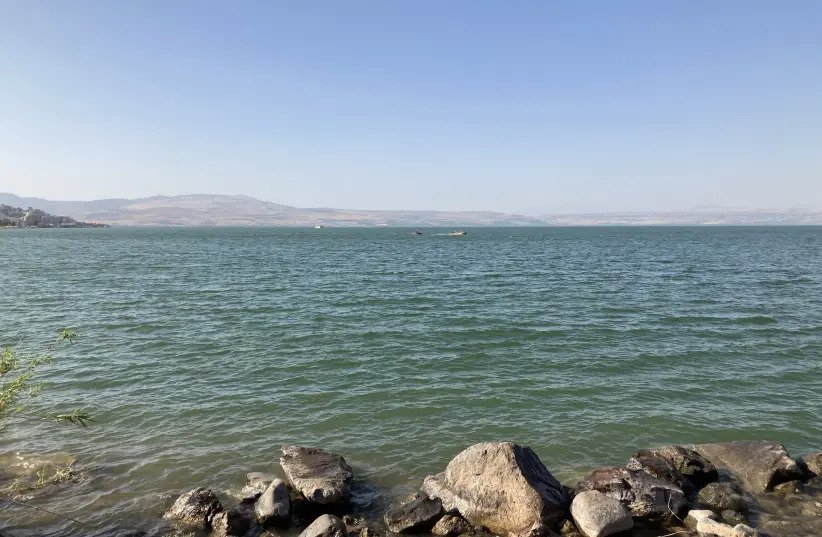Ancient Islamic mosaics uncovered on the shores of Kinneret
Ancient mosaics belonging to an early Islamic settlement have been uncovered by archaeologists from a German university in the Kinneret.

The mosaics, found near Khirbat al-Minya, are believed to have acted as a contact point for Umar and local Arab tribes dating to the fifth century BCE.
Khirbat al-Minya may have also served as a caravanserai, known to some as a caravan inn. Travellers coming through the region at the time would be able to rest there and recharge before heading back on their long, often strenuous journey.
Archaeologists from Germany’s Johannes Gutenberg University Mainz (JGU) discovered these ancient mosaics along the Kinneret’s shoreline after geomagnetic surface surveys and subsequent excavations were done in the surrounding area.
According to JGU archaeologists, this discovery was made possible by the geomagnetic surface surveys themselves. Through this process, along with specifically-mapped “exploratory cuts,” archaeologists from the Mainz team were able to prove that the caliph, which was the title of the chief Muslim civil and religious ruler, strategically planned his palace. This residence was complete with a mosque and a high gate tower close to a nearby settlement.
At the time of construction of this palace, the shoreline was believed to have been almost completely deserted.

Prof. Dr. Hans-Peter Kuhnen of JGU uncovered remarkable details from their discoveries. “Our most recent excavations show that Caliph Walid had his palace built on the shore of the Sea of Galilee in an already carefully structured landscape that had long been inhabited.”
“It was here that considerable money was subsequently made through the cultivation of sugar cane, sadly causing lasting damage to the ecosystem,” he said. What started generations ago as a money-maker would in turn have a cost that would never be repaid.
“Our research has brought this settlement adjacent to the caliph’s palace to light again, putting it in its rightful context among the history of human settlement of the Holy Land,” Kuhnen said. “Over the centuries, it experienced alternating periods of innovation and decline, but there was no real disruption to its existence during its lifetime.”
The Mainz archaeologists involved with the project found stone buildings from different periods made of basalt with plastered walls, a cistern and colored mosaic floors.
The tiles were found decorated with blossom designs, along with pictures of the animal and plant world of the Nile Valley.
The art found in the mosaics was believed to have symbolized “the life-giving power of the great river, which ensured Egypt’s fertility through the annual Nile flood.”
What can we learn from this discovery?
Archaeologists from JGU are confident this discovery shows that though life in Israel may have gone through major changes throughout the years, it never really made a full stop, which allows it to thrive today.
“With this research, we give the settlement in front of the threshold of the caliph’s palace a place on the stage of the settlement history of the Holy Land, which over the centuries has experienced a change of innovation and decline, but never real breaks,” a JGU representative said.
